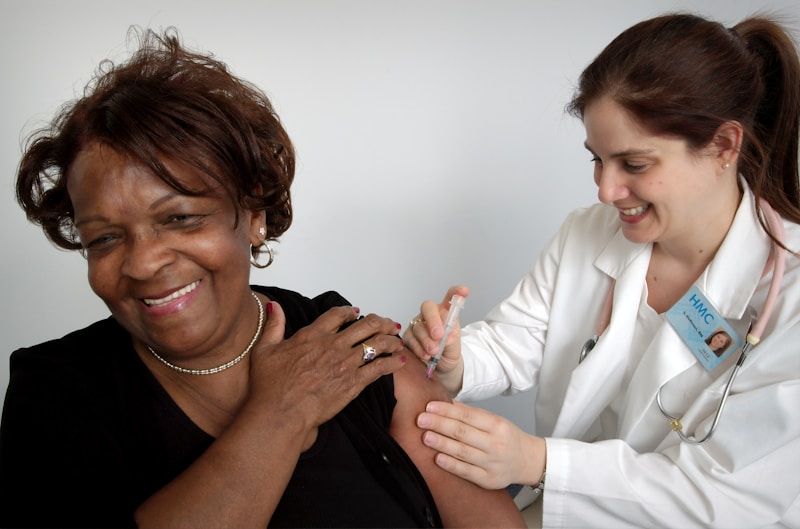Podcast Beta
Questions and Answers
What is a recommended method to communicate with a patient who is deaf or hard of hearing?
Which of the following methods is NOT advised when communicating with patients who have developmental disabilities?
What is a common symptom that may be heightened in a patient with dementia during a crisis?
When communicating with a child in a healthcare setting, which approach is most effective?
Signup and view all the answers
Which aspect of communication is crucial when caring for deaf or hard of hearing patients?
Signup and view all the answers
In what way might individuals with developmental disabilities process information differently?
Signup and view all the answers
What is a common challenge faced by caregivers when interacting with patients with dementia?
Signup and view all the answers
What type of communication is emphasized for patients who are deaf or hard of hearing?
Signup and view all the answers
What is a recommended strategy when communicating with patients who have dementia?
Signup and view all the answers
How can you make communication easier for children during a medical situation?
Signup and view all the answers
What approach should be avoided when dealing with patients with non-English language needs?
Signup and view all the answers
What is an important consideration when communicating with juvenile patients?
Signup and view all the answers
Which action is least effective when assisting patients with complex medical equipment?
Signup and view all the answers
What should be prioritized when addressing language barriers in healthcare settings?
Signup and view all the answers
What primary aspect should healthcare providers consider when communicating with patients with developmental disabilities?
Signup and view all the answers
In a stressful medical situation involving a child, which practice is crucial?
Signup and view all the answers
What is the most effective way to communicate with a patient who has developmental disabilities during a medical emergency?
Signup and view all the answers
What is an appropriate approach when communicating with a patient suffering from dementia during first aid?
Signup and view all the answers
Which communication strategy is crucial when attending to children in a medical emergency?
Signup and view all the answers
When faced with a language barrier in a healthcare setting, what is the best practice for effective communication?
Signup and view all the answers
What should be avoided when communicating with patients who are blind or have limited vision?
Signup and view all the answers
What is the best way to handle communication with a patient who has functional needs and is distressed?
Signup and view all the answers
Which action is critical when interacting with a patient who has a guide dog during a medical emergency?
Signup and view all the answers
What is an important consideration when conveying information to patients with special considerations?
Signup and view all the answers
Study Notes
Communicating with Deaf or Hard of Hearing Patients
- Gain the patient's attention before communicating (gentle tap or wave).
- Identify yourself and show ID.
- Face the patient directly.
- Speak slowly and clearly if using speech.
- Ensure understanding if using writing (sign language grammar differs from written English).
- Keep the patient informed using preferred methods (gestures, writing, speech, interpreter).
- Let the patient know help is coming.
Communicating with Patients with Developmental Disabilities
- Use a normal tone of voice.
- Speak directly to the patient.
- Use concrete, specific language in short, simple sentences.
- Repeat or rephrase statements for understanding.
Communicating with Patients with Dementia
- Dementia is a general term for severe mental decline affecting daily life. It is not a specific illness.
- Patients with dementia may experience increased fear, confusion, or frustration during a crisis.
- Moving patients with dementia to a quieter area can reduce stress and improve focus.
Communicating with Patients Who Are Blind or Have Limited Vision
- Look for clues like eyeglasses, canes, or guide dogs.
- Ask if the patient has limited vision if unsure.
- Describe surroundings and actions clearly.
- If a guide dog is present, work with the patient to manage the dog; avoid handling the dog without direction.
- Speak clearly and slowly, repeating instructions as needed.
Communicating with Juvenile Patients
- Stay calm and get down to the child's eye level.
- Move slowly and involve children in the process.
- Keep children informed of actions; this can reduce fear.
- Avoid separating children from parents unless abuse is suspected.
- Involve parents or caregivers in examination and treatment.
Communicating with Patients Using Medical Equipment
- Do not be distracted by medical equipment.
- Respectfully ask the patient or caregiver about the equipment's function.
Communicating with Patients with Non-English Language Needs
- Contact dispatch for an interpreter.
- If an interpreter is unavailable, use techniques for hard-of-hearing patients or non-verbal cues.
- Do not use children as interpreters.
General Communication Guidelines for Emergency First Aid
- Respond calmly, caringly, and politely to build confidence.
- Redirect emotional patients to focus on the immediate situation or a meaningful task.
- Stay focused on treating the patient.
Studying That Suits You
Use AI to generate personalized quizzes and flashcards to suit your learning preferences.
Related Documents
Description
This quiz covers best practices for communicating with patients who are deaf or hard of hearing, have developmental disabilities, or suffer from dementia. Understand the unique needs of each patient group to enhance healthcare communication effectively.





